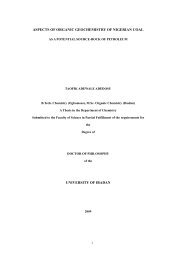View/Open - TWAS & OWSD Thesis Repository Home
View/Open - TWAS & OWSD Thesis Repository Home
View/Open - TWAS & OWSD Thesis Repository Home
Create successful ePaper yourself
Turn your PDF publications into a flip-book with our unique Google optimized e-Paper software.
To study the inheritance in the F 2 population, F 2 seed of the crosses were<br />
Ikram x inbred line 163A and Heinz H7155 x inbred line 163A were included with<br />
77 and 95 plants of each F 2 population respectively. These materials were used from<br />
the previous work of Fiorini (2008).<br />
In addition to the previous materials, ‘New York’ and ‘Caline’ which have<br />
only the Ph-1 resistance gene to late blight were used as standard varieties<br />
susceptible control.<br />
2.3 Mating design<br />
Thirty seedlings of each of the 10 selected parents were grown in the<br />
greenhouse during winter 2008 at Horta Velha, Vicosa, MG. Pollens from each<br />
inbred line plants originated from the crossing (Solanum lycopersicum L.cv. Santa<br />
Clara x Solanum habrochaites f. glabratum) were collected and bulked into plastic<br />
plate, 4cm in diameter with the aid of vibration tool to help pollen-dispersal. Each of<br />
the 3 commercial hybrids (Ikram, Heinz H7155 and Alambra) and three advanced<br />
inbred lines (NC 1 CELBR, NC 2 CELBR and NC 25P) were crossed separately to<br />
each of the five inbred lines following the II mating design (half dialle) where the P<br />
and F 1 ’s were included only. Twenty pollinations for every cross was accomplished<br />
during June/July, 2008. The fruit set of the cross NC 25P x inbred lines was low and<br />
in addition a majority of fruits did not produce sufficient seeds (Table 1) so this<br />
cross was eliminated from the field experiment evaluation. Table 1, shows the<br />
names of parents and the amount of seed of each cross. Seed extraction was done<br />
through fermentation for 48 h according to Giordano et al. (2003).<br />
2.4 Field design<br />
Seeds of F 1 were sown in 2 nd of March, 2009 in 200-cell trays using<br />
commercial peat moss mixture as growing media fertilized once a week with 0.5%<br />
solution of N:P:K (15:15:20). Thirty five day-old seedlings were transplanted in the<br />
field. The applied experiment design was randomized complete block design<br />
(RCBD) with 3 replicates, 5 plants per plot with distance 60 cm intra-row and 100<br />
21


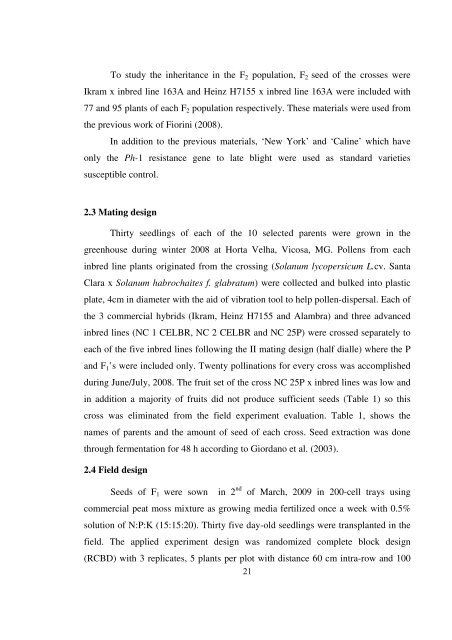

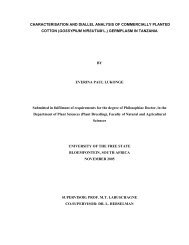


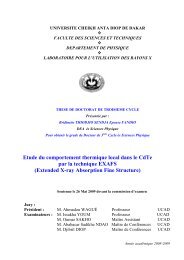
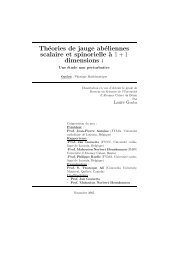
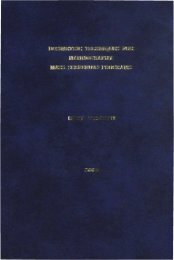

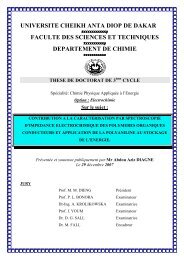
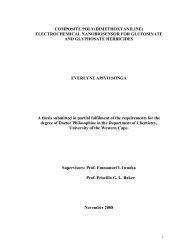

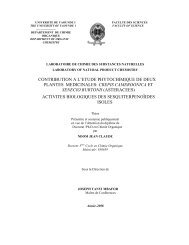
![SYNTHESIS AND ANTI-HIV ACTIVITY OF [d4U]-SPACER-[HI-236 ...](https://img.yumpu.com/30883288/1/190x245/synthesis-and-anti-hiv-activity-of-d4u-spacer-hi-236-.jpg?quality=85)
